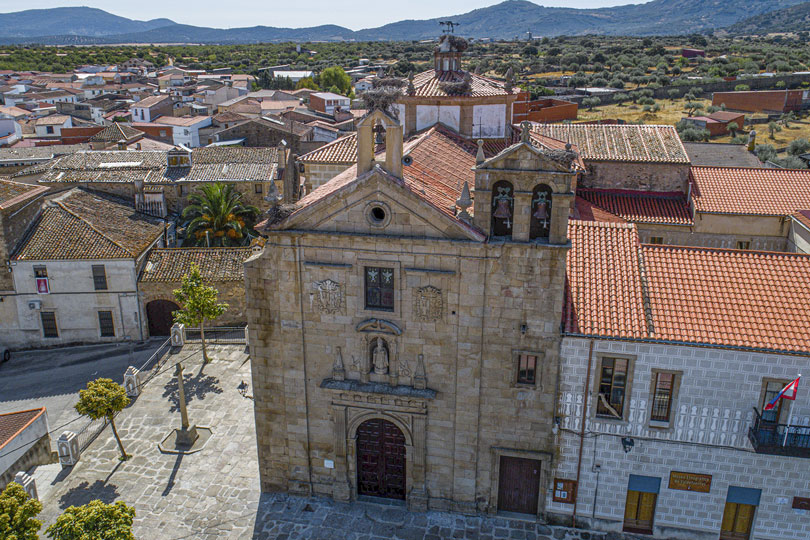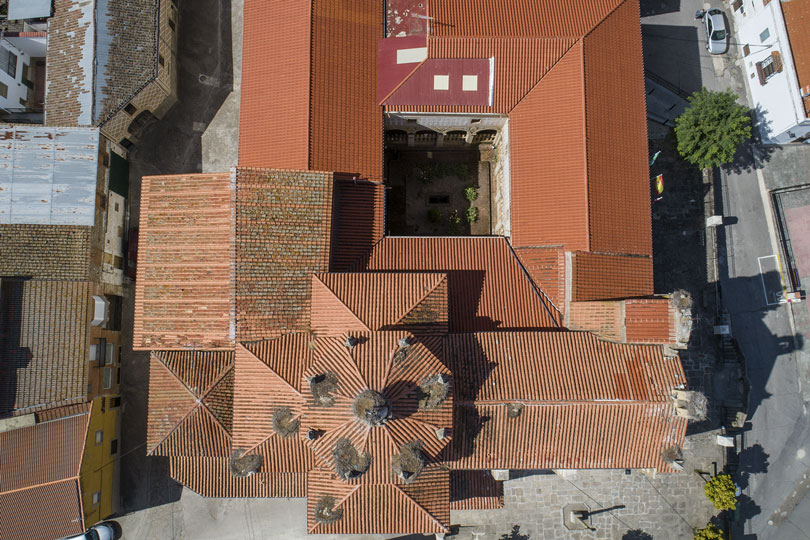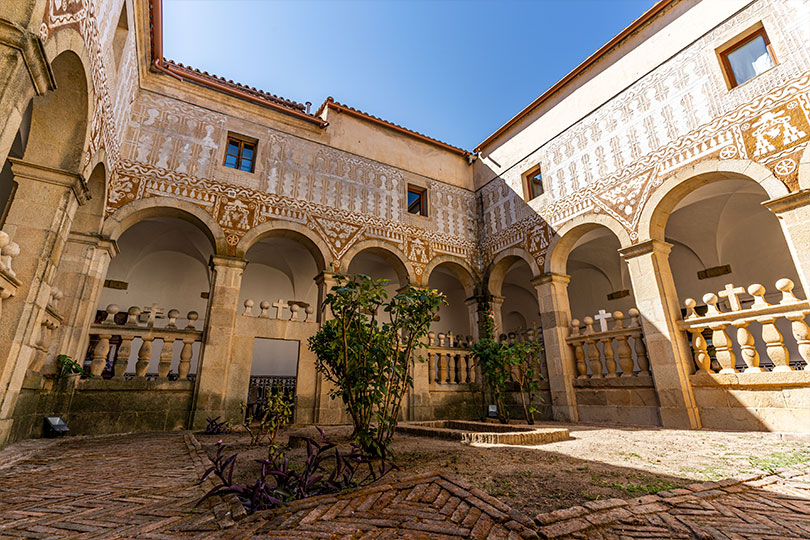La Plazoleta
Former Convent of San Agustín
The construction of the Convent of San Agustín began in May 1634, with intermittent interruptions until it was completed in 1721. It was founded in 1634 by Alfonso Lancaster, the 1st Duke of Abrantes, and his wife, Doña Ana de Sande, the 2nd Marquess of Valdefuentes. It belonged to the Order of the Augustinian Recollects.

Facade of the Former Convent of San Agustín.
It had up to 24 religious members, including conventuals from the novitiate, and up to 4 clerics in the parish. This splendor was eclipsed by the Ecclesiastical Confiscations of Mendizábal, which put an end to monastic life in the Church-Convent of San Agustín.
It was conceived as a family mausoleum, raised on a high ledge several meters above street level, accessible by stone stairs.
The church’s façade is Neoclassical and remains intact. The most artistically prominent feature is the entrance, consisting of a semicircular arch, above which a niche houses an image of Saint Augustine. Above this, there is a large window, and on either side, two identical mural shields corresponding to the arms of Don Álvaro de Sande and Enríquez, grandson of Don Álvaro de Sande, the founder of the Lordship.
Inside the church, the baroque-style altarpiece is remarkable for its rich ornamentation. The gilding on the woodwork is made of genuine gold leaf, still retaining its original shine and splendor in some parts. Behind it is the Marquess’s mausoleum, octagonal in shape, with finely carved stone walls.


The Cloister of the Convent of San Agustín
Currently, thanks to ongoing maintenance, “the small Escorial,” as it was called due to its spectacular monumentality within monastic austerity, can be admired. It is a true gem of stonework, with well-preserved arcades and adorned with beautiful and delicate sgraffito. In the center of the garden, there is a cistern.
The Convent building was purchased by the Town Council, and today it houses the Town Hall, the Civil Guard barracks, the House of Culture, the Justice of the Peace, and the Ethnographic Museum.
360º photo of the Cloister
